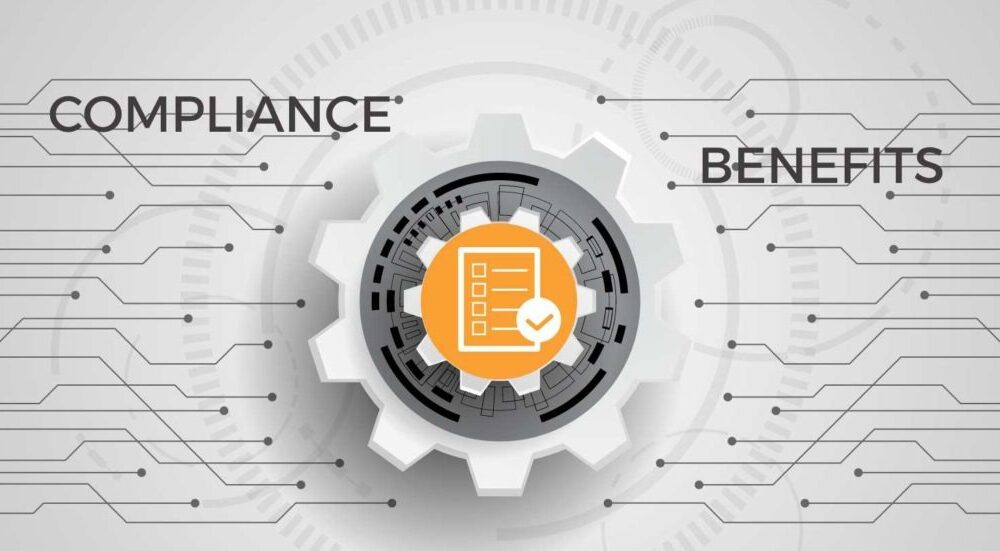The Benefits of Compliance Monitoring Software in the Life Sciences Industry

According to the KPMG’s CCO survey 2023, “28% of CCOs consider data analytics/predictive modeling for life sciences risk monitoring as one of the top compliance challenges.” Effective risk monitoring helps life sciences companies identify, assess, and mitigate potential compliance risks before they escalate into legal issues, fines, or reputational damage. This is especially critical given the increasing scrutiny from regulatory bodies such as the FDA, CMS, OIG, etc.
Living in a tech-driven era, compliance professionals must look into leveraging a one-stop compliance monitoring software. A comprehensive compliance monitoring solution can streamline the data management process, enabling organizations to efficiently track compliance metrics in real-time. This software facilitates the automatic collection and analysis of data from various sources, providing insightful dashboards that highlight potential compliance gaps and areas for improvement. With features such as alerts and notifications, compliance teams can proactively address issues before they become significant threats. By integrating advanced analytics, companies can also harness predictive insights, allowing them to adjust their compliance strategies based on anticipated risks and trends in the life sciences sector.
Ultimately, investing in such technology not only enhances compliance efficacy but also builds a culture of accountability and transparency within the organization.
Why Compliance Monitoring Software is Essential?
Regulations such as the Anti-Kickback Statute, Foreign Corrupt Practices Act (FCPA), and the Affordable Care Act (ACA) cover a wide array of activities, from interactions with healthcare professionals to the marketing and distribution of products. Given the scale and scope of these requirements, manual compliance monitoring is no longer sufficient. Compliance monitoring software offers a proactive, data-driven approach to identifying and mitigating risks, ensuring that companies can maintain their standing in the industry.
In the life sciences industry, maintaining compliance with regulations is not only a legal requirement but also a critical aspect of operational integrity. As regulatory demands increase in complexity, the need for effective compliance monitoring software has become more pronounced. Here are some of the key benefits that such software offers:
- Proactive Risk Management: Compliance monitoring software enables organizations to identify and address potential risks before they escalate into significant issues. By continuously monitoring activities, such as interactions with healthcare professionals, financial transactions, and promotional practices, the software can detect patterns that may indicate non-compliance. This proactive approach allows companies to take corrective actions early, reducing the likelihood of regulatory violations.
- Automation and Efficiency: Manual compliance processes are often time-consuming and prone to human error. Compliance monitoring software automates routine tasks like data collection, reporting, and auditing, significantly improving efficiency. Automation ensures consistency in compliance efforts across different regions and business units, freeing up resources for more strategic activities.
- Enhanced Data Transparency and Reporting: Regulatory bodies require detailed and timely reports on various aspects of a company’s operations. Compliance monitoring software provides real-time data visibility, allowing organizations to generate accurate reports quickly. This capability is particularly valuable during audits, where the ability to produce comprehensive and reliable data can help demonstrate compliance effectively.
- Continuous Improvement: Effective compliance is an ongoing process that requires regular updates and refinements. Compliance monitoring software supports continuous improvement by providing insights into the effectiveness of compliance programs. Organizations can use this data to update policies, improve training programs, and adapt to changing regulatory landscapes, ensuring that they remain compliant over time.
Pick The Right Life Sciences Risk Monitoring Tool
Selecting the right compliance monitoring software requires careful consideration of your organization’s specific needs. The most effective solutions offer flexibility, scalability, and the ability to integrate with existing systems. Additionally, the software should cover all aspects of life sciences compliance, from risk assessment and monitoring to reporting and remediation.
Enhance Your Compliance Efforts With A Data-Driven Approach
qordata offers a cutting-edge compliance monitoring solution that is tailored to the unique challenges of the life sciences industry. Leveraging advanced technologies like Artificial Intelligence (AI), Optical Character Recognition (OCR), and Computer Vision, the platform provides a comprehensive approach to compliance monitoring.
Here’s how their compliance monitoring solution stands out:
- Data-Driven Risk Management: The compliance monitoring software uses data science techniques to prioritize risks, helping organizations focus their efforts where they are most needed. It identifies key risk areas, individuals, and activities across the organization, allowing compliance teams to develop targeted monitoring plans. This data-driven approach ensures that potential compliance issues are addressed proactively.
- Global Coverage and Integration: The platform offers global coverage of compliance monitoring, ensuring that organizations can manage compliance across multiple regions seamlessly. It integrates with various systems, such as Concur and Veeva, providing a unified view of compliance activities. This integration simplifies the management of compliance efforts and enhances the overall effectiveness of the monitoring process.
- Advanced Monitoring Capabilities: The compliance solution includes features like live monitoring with customizable checklists, automated expense monitoring and auditing, and the use of Computer Vision and machine learning to detect anomalies in sign-in sheets. These advanced capabilities ensure that compliance monitoring is thorough, accurate, and tailored to the specific needs of the organization.
- Comprehensive Analytics and Reporting: The platform provides comprehensive analytics with executive dashboards that offer insights into compliance status and risk indicators. This level of transparency is crucial for making informed decisions and demonstrating compliance to regulatory bodies. The software’s ability to track and manage remedial actions further enhances its utility in maintaining a strong compliance posture.
Conclusion
In conclusion, the integration of compliance monitoring software is essential for life sciences organizations striving to navigate an increasingly complex regulatory environment. By leveraging advanced technologies and a data-driven approach, companies not only enhance their ability to manage compliance risks but also foster a culture of continuous improvement. This evolution in compliance practices allows organizations to focus on their core missions while maintaining the highest standards of operational integrity. As firms seek to stay ahead in the competitive landscape, investing in effective compliance monitoring solutions will prove invaluable for regulatory adherence and overall business success.





